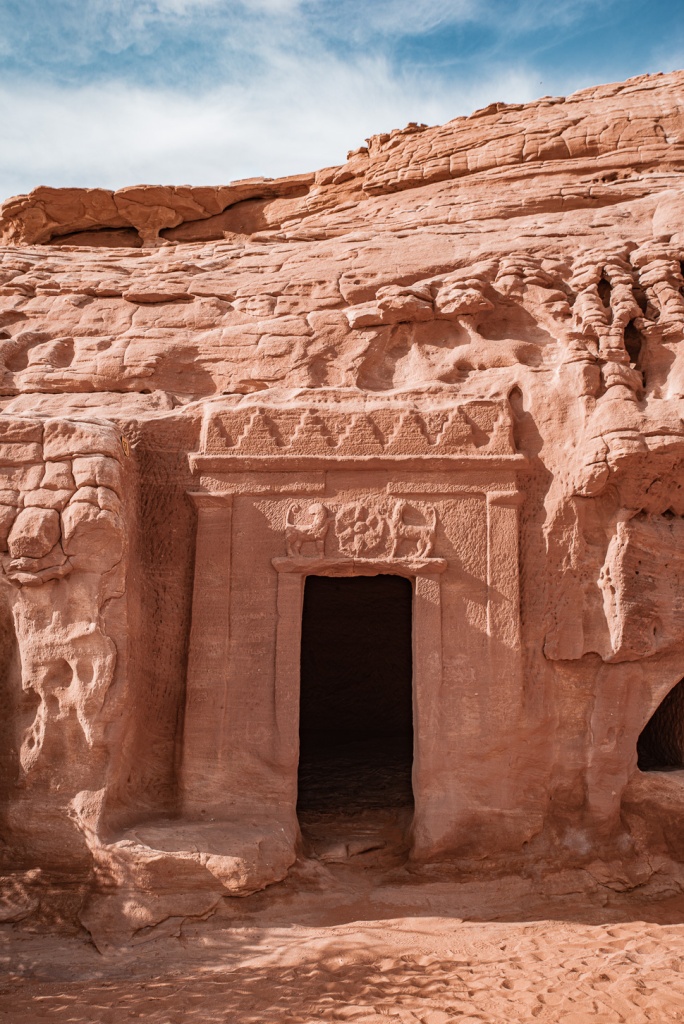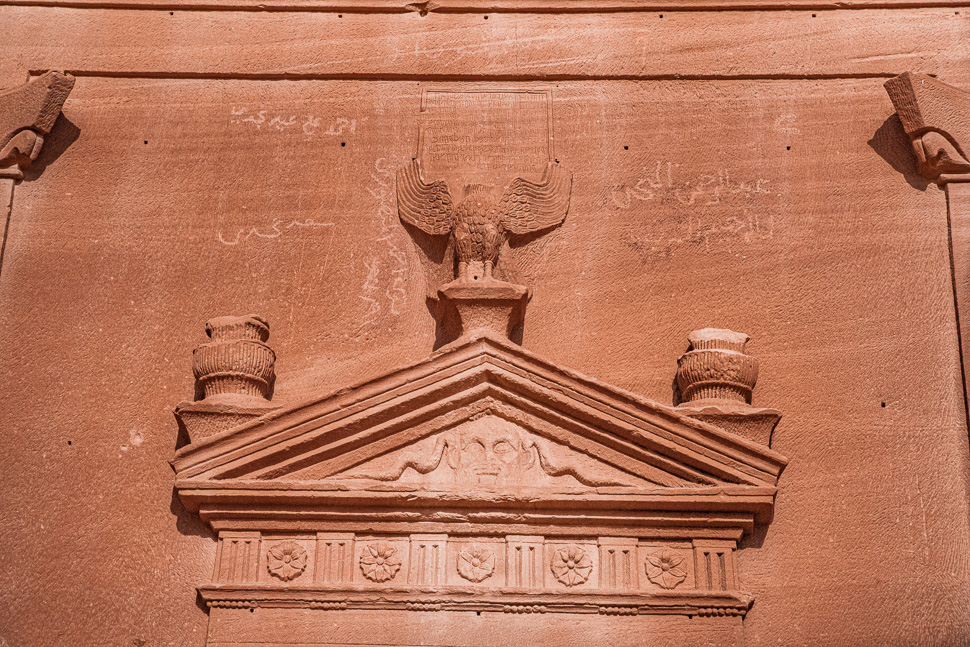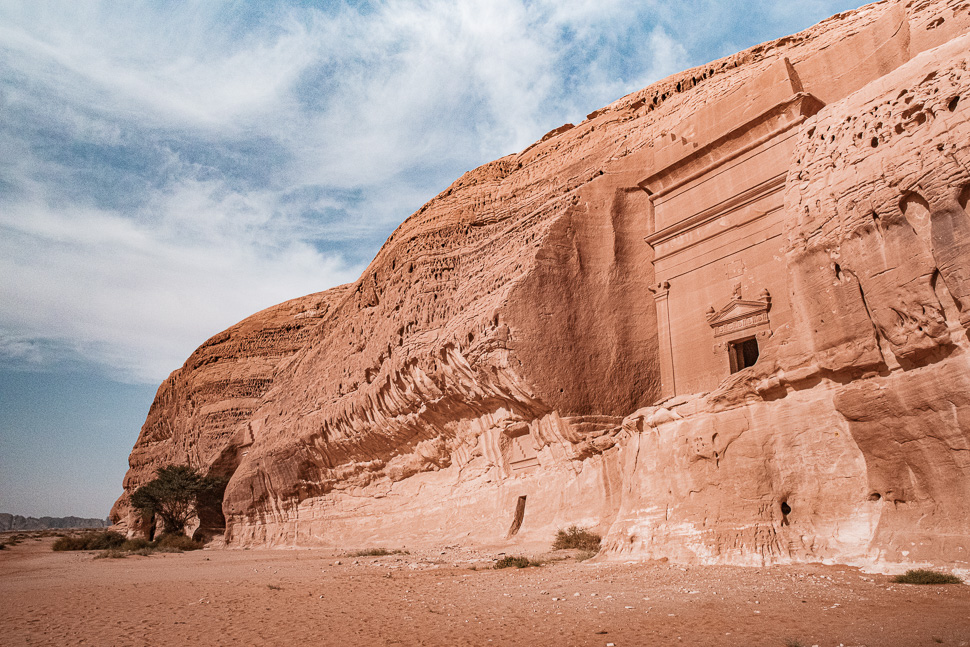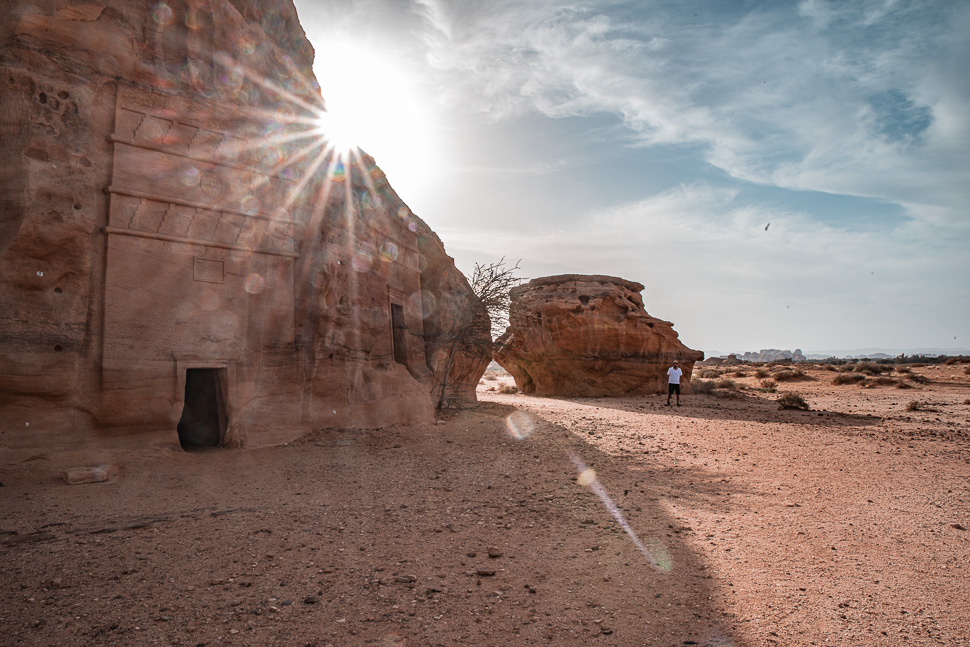
Hegra, also known as Mada’in Salih, 20 km north of Al Ula, was the southernmost and second-largest city of the Nabataean kingdom after its capital Petra in Jordan. Traces of Lihyanite and Roman occupation, before and after the Nabataean rule, can also be found. The site is most famous for its well-preserved monumental rock-cut tombs, with their elaborately ornamented façades.

We had booked a tour to visit the site, where we drove by bus to 4 different locations and our female guide explained everything about the tombs and a religious site we visited.


First we visited a religious area, known as “Jabal Ithlib“. It is believed to have been originally dedicated to the Nabataean deity Dushara. A narrow corridor, 40 metres long between the high rocks and reminiscent of the Siq in Petra, leads to the hall of the Diwan, a council-chamber or law-court. Small religious sanctuaries bearing inscriptions were also cut into the rock of the Siq.

A total of four necropolis sites have survived, with 131 monumental rock-cut tombs, many with inscribed Nabataean inscriptions on their façades. Of course, all of them had been looted, except of one tomb. A sand dune had covered it and when the archaeologists found it, it was still blocked with a stone. They found a female skeleton and many remains, but no big treasure. Nevertheless, what a spectacular find, and in the visitor centre there is a reconstruction of the woman’s face and some more information.










Our last stop was at the outstanding tomb of Qaṣr al-Farīd, which stands in a distance to the other tombs, much bigger than the others, using a single monolith. It was not finished, why is not clear, and the owner written on the inscription was never buried here. Nevertheless, an outstanding site, which we enjoyed very much with the low sun illuminating it perfectly.
